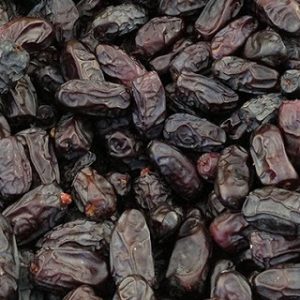Cashew
Cashew is a tree that is native to Brazil. It also grows in parts of Asia and Africa. Its nut, also known as cashew, is commonly eaten as food. People also use the nut to make medicine.
Cashew is used for diabetes, high cholesterol, heart disease, stomach and intestinal (gastrointestinal) ailments, skin problems, and other conditions, but there is no good scientific evidence to support these uses.
How does it work ?
Cashew contains chemicals that might work against certain bacteria. Some of the fats in cashew might help to lower cholesterol levels in the blood.
The fat present in cashew nuts are responsible for growth of good cholesterol and reduction of the bad cholesterol. Kaju gives a lot of energy and also keeps you satiated for a long time. Therefore, you can consume 3-4 cashew nuts everyday for proper weight management.
If you are a fan of cashew nuts, you may have noticed they don’t always look the same.
Many people don’t realize that there are many different types of cashew nut
We have put together the different types and some general information about cashew nuts so you can find the perfect nut for you!
Types of Cashew Nuts
Here are the most common types of cashew nuts available.
- W-180
Although each of the cashew nuts we will discuss is still going to be considered a cashew, some are known to be better than others.
At the top of the list is the W-180 because this is the largest and most expensive available.
The different types of cashew nuts are really like grades.
The grade of the cashew will tell you things about the coloring, the size, and the pricing as well.
In total, there are 33 different grades of cashew nuts, but only 26 are available for people to purchase.
The W-180 is sometimes referred to as the King of cashews.
This is because of its size and the fact that it remains wholly intact when sold.
- W-210
The W-210 is going to be smaller than the W-180.
These are still very large nuts and will also cost quite a bit of extra money.
The W-210 cashews are often referred to as Jumbo size.
They fall slightly behind the King, but these are still known and recognized as being very large cashews.
- W-240
Moving down another step in size, you will come across the W-240.
These are the mid-grade cashew known as the standard size cashew.
These cashews are very commonly seen in nut mixes where the cashew is not the star of the show.
They will have a medium type price tag, and although they still look good, they are not nearly as big as a King or Jumbo cashew.
The great thing about the W240 is this is where you will see the pricing of the cashews start to drop.
The W-240 is considerably less expensive than the W-180 or W-240.
- W-320
The W-320 is the easiest cashew nut to find and the most widely sold and distributed.
The W-320 offers the perfect balance between size and cost, and they are what the majority of consumers are comfortable with.
The size is large enough, but the pricing makes them much more appealing to the general consumer.
- W-450
The W-450 is the last of the whole size cashews.
These are very inexpensive when compared to King Cashews, but the difference is size is going to be very noticeable.
The W-450 is quite popular because of their cheap pricing, and once you move down from the W-450, that is when you start talking about pieces of cashews.
If you know you want the whole cashew but don’t want to spend a lot, the W-450 is a great choice to consider.
- Scorched Wholes
You may also see cashews called scorched cashews.
The scorched cashews are those that are a light brown color.
The light brown cashew was roasted slightly longer than the white ones, and it results in a darker brown color.
The scorched type cashews are sometimes sold in pieces and, other times, sold in wholes as well.
Cashew Pieces
Now that we have discussed all of the whole cashews, it’s time to move to the different ways cashews are sold.
The whole cashew is not the only way to purchase one.
You can also get pieces of cashews.
The different types of pieces or kernels are called butts, splits, and halves.




